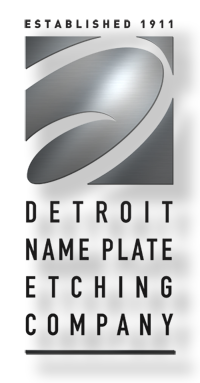Screen printing is one of the most relied upon technologies in commercial printing. It allows the use of color in a way that is distinctive from other forms of printing. Three considerations are of particular importance when choosing screen printing. These are:
Interestingly, the way you see your colors varies from the way any other individual sees them. To overcome this problem, the industry has developed a numerical color matching system. The system is based on the chemistry of the color, not on the eye’s perception of that color.
While gradiation is an option, the nature of the screen printing process requires clean color separation. Consequently, it becomes even more important to carefully choose your design colors. At Detroit Nameplate Etching Company we use the patented Pantone color matching system, a system that has been in the in the industry for over half a century. The customer simply brings in their design, we analyze it using the Pantone system, and then make suggestions regarding the best colors. That way your design turns out pleasing not just to your eye but also to your target audience’s eye. Screen prints are done in epoxy paints in either glossy or matte finishes.
Just as you should choose your colors carefully in screen printing, you should also choose your surface material carefully. Metals, plastics, vinyl and polyester all have their unique qualities. While practically any smooth surface can be screen printed, it is important to consider where the final piece will be used. Screen printing is particularly unsuitable in environments that might contain caustic chemicals, abrasives, or fumes that might deteriorate your print.
For more information as to how screen printing may be appropriate for your next project contact us.

